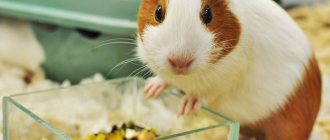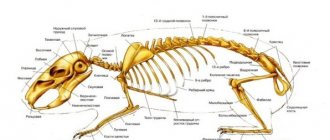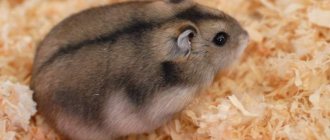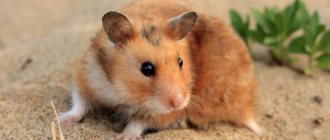Different people get pets for different reasons. For some, it is important that a pet brings joy or makes up for the lack of love and friendships, others need to fill their leisure time with something, and still others feel the need to take care of someone and be responsible for them, because thanks to this their life takes on additional meaning.
If the obligations are very burdensome or there is no opportunity to take care of your pet all the time, give it love and attention, but at the same time the desire to place a cute (or not so cute) animal in your home is especially great, there is a way out: you can opt for the most unpretentious and the pickiest pet that exists today. This is an ideal option for lazy or, conversely, too busy people. The group of least demanding domestic animals includes several representatives of the fauna. Let's get to know them better.
Rabbit
The top of the most unpretentious pets is opened by this little fluffy ball, which causes so much affection in most of us. Of course, first of all, rabbits are farm animals, but this fact does not prevent them from successfully playing the role of pets, which can be acquired without the slightest difficulty, but are a little more difficult to maintain.
Domestic rabbits range in size from 1-12 kg depending on the breed. One way or another, there shouldn’t be any problems with accommodation even in a small apartment. In addition, you can keep your baby in almost any part of the house, even in the hallway or kitchen. The main thing is that he is in a cage that is spacious enough for him, equipped with a feeder and drinking bowl.
Food for these cute animals is inexpensive. It is enough to clean the cage once a week, which is very convenient for those who travel frequently or have a busy work schedule.
At the same time, it is necessary to ensure that the pet’s food does not stagnate, and the water in the drinking bowl is updated in a timely manner. From time to time, the rabbit needs to be let out of the cage so that the animal can stretch its legs by running around the house. At the same time, you must not let the baby out of sight. It will also be useful to carry your pet in your arms, giving it a little attention and affection.
When releasing your pet into the wild, it is important not to forget that the animal, having become a pet, has not at all lost its characteristic features for a rodent. Therefore, you should not be surprised by damaged wires, bitten chair legs and other similar surprises.
Another important point is the need to comb the furry animal during the molting period. In addition, regular nail trimming will be required, but no more than once a month.
Option seven: not only valuable fur...
...but also a great companion for your child. We are, of course, talking about rabbits - cute, active, affectionate, playful and sociable creatures, which, moreover, are quite trainable. A rabbit is an ideal gift for an already grown-up child, because if you do not treat the pet roughly and do not frighten it unnecessarily, then it will demonstrate a calm, kind disposition, become truly attached to your child and become a good and reliable friend for him. Especially considering that on average rabbits live 5-10 years.
To stay healthy, your rabbit must be able to move actively. And since by nature this animal is endowed with a problematic digestive system, it will need special food, which from time to time is recommended to be “diluted” with fresh vegetables and fruits. Some particularly furry animals may require regular brushing. Otherwise, these popular pet rodents are quite unpretentious.
pixabay.com/Anastasia Gepp
Canary
The house canary is a domesticated subspecies of the Canarian (hence the name) canary finch, native to the Canary Islands, the Azores and Madeira Islands. Thanks to its singing, this bird gained enormous fame and became in demand as a pet.
The canary does not require special care. It is enough to purchase a cage with a tray, drinking bowl and perches.
The bottom of the cage is most often used as a toilet, so it is recommended to cover it with a small layer of sand and regularly update the composition. The procedure will help get rid of the smell of feces, and the more often it is repeated, the better. In addition, sand tends to crumble over time, which also requires regular replenishment. Obviously, a busy person does not have time for this. In this case, instead of sand, you can use regular paper, which is enough to change once every 2-3 days.
The canary should be fed every day. If the schedule does not allow, then you can limit yourself to replenishing the feeder once every 2-3 days. The volume must be selected in accordance with the frequency of feeding - the less often it is, the greater the amount of feed required.
Despite being busy, the canary must be let out of the cage at least once a week. A room that is not filled with furniture and various equipment is best suited for this. To enjoy freedom, the bird only needs to fly for 2-3 hours.
Canaries love water treatments. And this is not surprising, because bathing cleanses the skin and strengthens the plumage. The water should be at room temperature.
Some people mistakenly assume that canaries are restless creatures that give no rest to their owners and mercilessly wake them up at the crack of dawn. This problem can be solved very simply - with the help of a dark dense cloth, which is used to cover the cage at night.
The bird trusts people, so there are usually no difficulties with its behavior at home.
Raccoon
You should take a responsible approach to choosing a raccoon. It is recommended to take only small ones and only from trusted nurseries. Buying a raccoon from an unreliable seller will result in problems with the behavior and upbringing of the animal. The raccoon may turn out to be completely wild and will be unable to live with people.
A raccoon requires a lot of space. These animals are very active and inquisitive. Therefore, you will have to hide all valuable items or be mentally prepared for the fact that your expensive phone will go into a basin of water.
To reduce the raccoon's activity, it is walked regularly. To do this, from childhood the animal is accustomed to a leash.
The raccoon must be constantly monitored. If you leave a raccoon alone at home, this cunning and sneaky animal can dismantle your home brick by brick. Even in the presence of its owners, the raccoon is capable of mischief. But for their cute appearance, everything is forgiven for raccoons.
The raccoon's diet is carefully monitored. It should include high-quality raw meat, vegetables, nuts, dried fruits and quail eggs. In addition, amphibians or other aquatic inhabitants can be added to the raccoons' diet. In the wild, raccoons get most of their food from bodies of water, according to National Geographic.
Budgie
As with the canary, the only thing a parrot needs is a well-stocked cage. This means that it must contain mandatory interior items - a drinking bowl, a feeder and a bathtub. Important characteristics of the cell:
- rectangular shape;
- spacious;
- the presence of perches, swings, ladders;
- the presence of sand at the bottom of the cage.
It is best to place the parrot's house in a bright place. It is important to avoid drafts and direct sunlight.
You can feed the bird with specialized food or supplements, which are sold at any pet store. There are additional requirements for water, since tap or boiled water is not suitable for birds. Therefore, the best option would be drinking still water.
A few more recommendations for caring for a parrot that will not burden the owner too much:
- during the molting period, it is recommended to add 2-3 drops of freshly squeezed lemon juice to the drinker;
- To prevent the bird from growing the tip of its beak, which interferes with eating, the bird should sometimes be offered fresh branches (linden or rowan) or special mineral stones.
How to understand that an animal is not suitable for a child?
After purchasing a pet, you need to wait some time for the animal to get used to the new place and for the child to learn how to perform the necessary manipulations. Don't make hasty conclusions, wait until life gets back on track. And then evaluate whether the chosen animal is suitable for your family? It is worth paying attention to the following signs.
Allergy
The only case when you don’t need to wait, but take action right away. You shouldn’t wait until an adult or child gets to your pet and the animal becomes attached to you. The best solution would be to return the animal to the nursery or, if the first option is not possible, to hand it over to good hands. Signs of an allergy may include:
- lacrimation;
- redness of the sclera;
- snot, itchy skin;
- itchy scalp;
- sneezing and coughing.
It is enough to follow a few simple rules to avoid such an unsuccessful attempt to make a little friend.
- For a child prone to allergies, you should choose non-allergic animals
- It’s best to find a place where you can chat with him before buying a pet: go on a visit, visit a touching zoo
Aggression
Aggressive behavior at the first stage of life is not a reason to get rid of an animal. You should teach your child to avoid cruelty to a pet, not to hurt him, not to violate his boundaries, and do not allow the child to torture the animal. If a child hurts animals, teach him compassion and care. It is also necessary to properly raise a dog or cat from the very first day of its stay and teach it not to growl and bite, but to simply move away from a climbing child. With this approach, when the dog grows up, it will become a wonderful playmate and protector, not a threat.
Problems such as: smell, presence of wool on furniture, lack of time - can be solved. If a situation seems hopeless, you should turn to specialists for help. Most often, an adult is to blame for difficulties, so getting rid of a pet is the most extreme measure. Under no circumstances should you resort to cruel measures - giving the animal to strangers, throwing it away in populated areas, euthanizing it. A child looking at such an attitude is unlikely to learn anything good - most likely, betrayal, avoiding solving a problem, murder will become a natural way out of a difficult situation for him.
Snake
The animal attracts with its exoticism, but few people would want to keep a reptile at home. Snakes delight some people and become objects of reverent love for them, while others are disgusted or terribly frightened. And this fear is well founded: purchasing poisonous snakes is not something to joke about.
It is best to opt for safe reptiles, such as:
- corn snake;
- royal python;
- rainbow boa constrictor;
- imperial boa constrictor;
- patterned runner;
- king and milk snakes.
All these types of snakes are not aggressive and are completely safe even for beginners.
To keep such a pet comfortably, you only need a terrarium, which can be used as an ordinary aquarium equipped with an incandescent lamp. The last condition is mandatory, since snakes are cold-blooded creatures and a constant source of heat is vital for them. Also, a layer of soil or sand should be placed on the bottom of the aquarium.
Pet snakes need regular hydration: the pet’s home is sprayed, and a drinking basin with cool water is placed inside, which is recommended to be changed every day.
If desired, you can place several branches in your pet’s “house”, along which the snake could crawl freely, enjoying its leisure time. And when miniature vines appear in the terrarium, your creeping pet will be delighted, because snakes love to swing on branches, even if they do it slowly.
You can feed your snake chicken or quail eggs, but it is also recommended to pamper your creeping pet with more delicious dishes:
- lean beef;
- chicken;
- pieces of fish;
- snails without a shell.
A snake raised in captivity is gradually accustomed to these delicacies. Wild reptiles prefer insects, small rodents, lizards, birds, toads, and earthworms. It is best to give your pet frozen food, and defrost it in air and dry it before feeding it directly.
Young snakes are fed once every 3-4 days, and adults - once a week. During the molting period, as well as when changing habitat or owner, the animal can “declare” a long hunger strike (up to several weeks).
Puma
Another unusual pet is the puma. The feline predator is a beautiful and noble animal.
Habitat: North and South America. The length of the animal can reach 190 cm, and weight - 110 kg.
Keeping a cougar in human housing is very difficult. The cougar is a wild animal and requires a lot of space. In addition, the puma needs a large amount of meat every day.
Nevertheless, there are known cases of successful domestication of this species. Thus, the Dmitriev couple from Penza lives in the same apartment with the puma Messi. The big cat can even carry out a dozen commands.
Giant snails (Achatina)
Any plastic container or miniature aquarium will be suitable as a home for such an exotic pet. The main condition is that the house must correspond to the size of its occupant and grow with the snail.
To prevent the mollusk from suffocating, several holes need to be made in the lid that covers the container, which will provide air access. A special soil should be poured onto the bottom - a mixture of peat and crushed coconut fiber. The substrate is moistened with a spray bottle, and it does not need to be renewed for 2-3 months.
The snails are fed with lettuce and dandelion leaves, and are also given carrots, pumpkin, cabbage, cucumbers, and watermelon. Interestingly, these snails eat dry food for aquarium fish with no less pleasure. The main menu must be supplemented with fertilizers for Achatina. The ideal option is crushed eggshells.
fennec
The fennec fox is a species of miniature fox with very large ears. In their natural environment, fennecs live in deserts.
The animal's body length reaches 40 cm, height at the withers is 22 cm. The fox weighs quite a bit - about 1.5 kg. With such small sizes, the animal’s ears grow up to 15 cm.
A properly socialized animal is very attached to its owner. Fenech will not show aggression towards strangers. However, this is a very active animal that requires constant attention. This intrusiveness may make it difficult for him to get along with other pets, who will try to avoid him.
You should not let the animal walk on its own: the fenech can very quickly dig under the fence or run away.
Hamster
These small fluffy animals are very reminiscent of well-fed mice.
As pets, hamsters are extremely successful and popular because they have the right characteristics for this:
- unpretentiousness;
- lack of aggression in behavior;
- fairly high intelligence;
- learning ability (which allows you to train the animal).
The disadvantages include the short lifespan of the animal (no more than 3 years).
The main thing that is required from the owner when keeping a hamster is to correctly build a feeding regime. It is advisable that the feeder is always full. They feed on plant and animal foods, but their favorite treat is seeds. If you don’t have time to buy special food, you can give your pet crushed bread, vegetables or fruits once every 1-2 days. It’s good if the hamster has access to a mineral stone, with which the animal can grind its teeth.
The cage must be durable and made of wire, since the hamster can chew any other material. You can use a terrarium as a home for your pet. Sawdust should be poured into the bottom of the “house” - hamsters love to burrow into it and build holes for themselves.
Often there is no need to clean the cage at all, which is a definite plus for busy people. In addition, even having the opportunity to constantly keep the hamster’s home clean, the owner would not only not benefit his ward, but would even cause harm to his psyche, even to the point of cognitive dissonance.
The fact is that hamsters have a craving for hoarding and collecting, and excessive cleanliness will make them feel a lack or lack of something, and the lack of a native smell will cause severe discomfort. Of course, this does not mean that the pet’s waste products do not need to be removed. But even in this case, you shouldn’t be too zealous: 2-3 times a week should be enough.
It is recommended to add accessories such as wheels and slides to the cage. Once a week, the hamster should be picked up, played with, and given the opportunity to run around the room. At the same time, it is necessary to monitor the pet, because the animal can run away. If possible, it is better to equip a special paddock for walking.
Does a child need a pet: pros and cons
To make such a responsible decision as purchasing a pet, you need to carefully weigh all the pros and cons. We list the factors that may influence your choice.
Positive sides:
- Fostering responsibility, compassion, empathy, communication skills . The animal needs daily care. Children can and should be involved in this from a very young age. The child learns to understand that this is a living creature that needs food and water, cleaning the cage, and a walk.
- The child will learn to control his negative emotions and not harm living beings . When playing with animals, children can hurt them. The cat or dog immediately responds to this - they leave, scratch, bite the offender, and the game ends. This behavior of the animal and the explanations of adults contribute to the development of the ability to empathize, sympathize, and restrain. It will be much easier for children to understand the feelings of other people and establish relationships with them. By interacting with an animal, children learn to better understand another, to be attentive and sensitive to him.
- Animals reduce anxiety and stress . Research shows that children who have pets have lower levels of worry and anxiety. This is due to a decrease in the production of the stress hormone cortisol and an increase in the production of the “love hormone” oxytocin. You can hug an animal, complain, it will “listen” and will not criticize. Children really need this. Communication with animals is often used in therapy for children with developmental disorders, such as autism. In general, the presence of animals in the house reduces tension and stress for all family members, brings a lot of positive emotions, which improves the quality of life.
- Increasing physical activity . Children playing with animals move a lot, which is always beneficial. This is especially true for dogs. They need to be walked daily; they love to run, jump, and play. This way, daily physical activity will become part of your life. According to statistics, dog owners take 25% more steps per day than those who don't have dogs.
- Opening up new opportunities . Communities of animal owners are clubs of interests that include people of different ages. Exhibitions and competitions are held. Teenage children can already take part in them with their pets. This is a great chance to make new friends who share interests.
Possible problems and difficulties:
- Additional dirt in the house, the need for frequent cleaning . It is impossible to maintain perfect cleanliness in a house where animals live. Yes, you will have to clean much more often, but you won’t be able to achieve sterility.
- Infections . Pets can infect humans with the most dangerous disease - rabies. To avoid this, animals must be vaccinated regularly. Cat scratches can cause a fever caused by a certain bacterium. The disease is not dangerous, but unpleasant.
- Helminthiasis . Helminth eggs are easily transmitted from pets to humans. And even if a cat or dog does not walk outside, the risk of helminths developing in them is high. Animals can become infected by eating raw meat, fish, and eggs. Often, worm eggs are brought into the house by a person wearing dirty shoes. It is imperative to deworm animals twice a year.
- Ringworm . This is a fungal infection transmitted from pets to humans. Children whose immunity is still weak are especially susceptible. Ringworm is an unpleasant disease, but highly treatable.
- with psittacosis , from birds .
- Allergy . A common problem. Moreover, an allergic reaction may appear for the first time when purchasing an animal, even if this has never been observed before. And it is not always possible to remove allergic manifestations with medication. Then all that remains is to find a new home for the animal. And this will be stressful for everyone - for the animal, children and adults.
Don't be too concerned about diseases transmitted by animals. You just need to treat your pet responsibly. By following the rules of hygiene and carrying out preventive treatments in a timely manner, you can avoid many problems.
We also do not recommend purchasing an animal for a child if at least one family member is categorically against it. We need to come to a reasonable compromise. Perhaps the solution would be to choose a different animal.
Rat
These animals are kept in metal cages with fine wire mesh. Bedding and toys should be placed inside. If it is not possible to walk your pet, it is better to place the rat in a multi-story cage and equip it with ropes and ladders so that the animal has room to roam. Wood fillers and large sawdust are suitable as bedding. The cage needs to be cleaned as soon as it gets dirty and has an unpleasant odor.
Rats are very active animals, so they need to be let out for a walk from time to time. At this moment, the animals require special attention, since they gnaw everything that gets in their way, and give special preference to wires.
As for feeding, it is best to use ready-made formulas. The rodent also needs special briquettes for grinding down its teeth. If it is not possible to purchase such an item in a store, you can replace it with a branch of an apple or plum tree.
Option six: fluffy but independent
In terms of fluffiness, the real champions on our list are chinchillas. These miniature animals, with thick and silky fur, are very pleasant to pet. Moreover, this animal is extremely clean and has almost no unpleasant odor. However, the chinchilla does not really like being compulsively squeezed: with much greater pleasure she runs around the apartment.
The chinchilla is unpretentious in keeping, and even the special food that is required to feed it can be easily found in almost any pet store. If you purchased a female chinchilla, then it is unlikely that she will feel the need for the company of her own kind, but it is recommended to have males in pairs.
Adult chinchillas grow up to 30 centimeters or more in length, and females are much larger than males. The lifespan of fluffies is from 10 to 15 years.
pixabay.com/Adam Białasik
Chinchilla
The list of the most unpretentious pets would not be complete without this cute furry animal. Contrary to popular belief, keeping chinchillas is not at all a labor-intensive task. To make the animal feel comfortable, you can limit yourself to fulfilling several mandatory conditions:
- recommended cage size – 80x70x60 cm;
- inside - at least 2 wooden shelves located at different levels;
- presence of a wooden house;
- the bowl should be hinged (it is better to secure it above the shelf), deep, metal;
- Wood filler or sawdust should be poured onto the bottom of the cage.
A significant advantage of this pet is the absence of odor, which eliminates the need for the owner to clean the cage daily.
You can feed your chinchilla once a day, preferably in the evening. The simplest solution is to give the animal special food, adding a pinch of hay or dried leaves to the main diet every 1-2 days. You should sometimes pamper your pet with such delicacies as:
- apples;
- carrot;
- hawthorn;
- rose hip.
Seeds, nuts, raisins, dried apricots, and candied fruits should be excluded from the diet.
Option four: clerical master
Office rat is a definition that is quite offensive both for the person and for the rat itself, which served as the “prototype” for this expression. Indeed, so what if, while entertaining itself, this cute, active and sociable animal loves to rustle with paper, strings and other toys and improvised objects? It is extremely unfair to associate him with careless clerks just because of this innocent habit. Moreover, the rat is an exceptionally smart animal, which also has an excellent memory. This is one of the cleanest and most unpretentious pets; care for it is also minimal and will not put too much strain on your budget. And, which is absolutely incredible for many, the rat becomes very attached to its owner, so, most likely, harmony will easily reign between it and your child. In short, a rat is an almost ideal “small-sized” pet. The only “but”: these rodents, like hamsters and gerbils, do not live long - only two to three years.
Press service of the pet exhibition “Zooshow” /
Guinea pig
These animals are unpretentious in their needs and almost never show dissatisfaction with life. The only thing necessary for a pet's well-being is a cozy home. A plastic box, shallow aquarium or plastic cage is suitable for such purposes. Hay, sawdust and straw are used as bedding. Some owners use cat litter because it absorbs moisture and odors well.
In addition to home improvement, an important part of caring for a guinea pig is proper feeding. These animals have a good appetite, which forces the owner to carefully monitor the pet’s nutrition and its “figure”. Guinea pigs eat specialized food best, but they are also not averse to eating fruits, vegetables, herbs, seeds, grains, and hay. It is important to stick to a strict schedule, that is, feed your guinea pig at the same time every day. At the same time, the evening should account for most of the daily requirement. It is recommended to add vitamin C to drinking water.
Since guinea pigs are herd animals, they should not be kept alone. A busy owner will not be able to replace a friend for his pet, so it would be appropriate for the company to get a second pig or, for example, a dwarf rabbit.
Guinea pigs love to be held. Unlike hamsters, you don’t need to watch them while walking around the house: if the cage is on the floor, the animal will return home on its own and quite willingly when it’s had enough time.
Slender loris
The slender loris is an animal of the Loriidae family of the primate order. Its natural habitat is in southern India and Sri Lanka. Lorises live primarily in tropical forests.
The animal's body length is 15–25 cm, body weight does not exceed 320 g. Life expectancy is about 12–15 years. Lori is a very cute animal with huge eyes.
Slender loris: Wikipedia
Loris are far from ideal pets:
- They require a special strict diet.
- They are nocturnal, so you can admire them without causing stress only after sunset.
- You can pet or pick up a loris only when the baby is not busy with something else.
You should not support poaching or buy wild lorises. Such animals will be unhappy in captivity.
land turtle
This option can be considered the most acceptable for people who do not have time to care for a pet. The turtle will need a terrarium with a lamp, soil and stones.
You can feed your pet with specialized food or give her natural products in the form of fresh vegetables. The water in the drinking bowl needs to be changed every week.
Caring for your turtle is limited to cleaning its legs and shell with a soft brush once a week. As for the living conditions, you will need to monitor the temperature (25-32 degrees during the day and 5-7 degrees lower at night) and humidity levels. It is enough to clean the terrarium once a month.
Sometimes your pet needs to be let out for a walk around the house. At the same time, you won’t have to closely monitor the turtle, because it moves quite slowly. At the same time, you need to be careful not to accidentally step on your pet.
Hedgehog
A hedgehog is a non-standard option for keeping a home. They don’t breed the usual hedgehogs, but African white-bellied ones.
Adults reach 30 cm and weigh less than 1 kg. In captivity, hedgehogs live up to 10 years.
Hedgehogs are active animals and are nocturnal. The animal is self-sufficient, and you should not expect special affection from it for its owner. The hedgehog needs time to get used to the person; at first he will curl up into a ball.
Hedgehogs are very smart animals. They are able to remember their nickname, and some can even show their owner what they want with their movements. Despite developed stereotypes, hedgehogs are predators and require a protein diet. They need to eat worms and crickets, not apples.
Cat
The most popular and least picky pet is, of course, the cat. The main thing she needs is a place to eat and a toilet, regular feeding and complete freedom of movement (within reason, of course). For busy people, this option is a godsend, because cats do not need to be walked and bathed. It is enough to brush your pet once a week so that your pet does not eat its own hair and does not leave it on furniture and carpets. It is also recommended to accustom your cat to a scratching post, which will save furniture and other property.
Despite the fact that all these animals are completely unpretentious, some effort will have to be made to raise and maintain them in any case. After all, a pet is not a piece of furniture or a toy that can get boring at any time. This is a living creature that, to one degree or another, needs attention and care.
Benefits of keeping animals in a home with young children
Many parents, thinking about what kind of pet to get their child and whether it is worth doing it, have repeatedly replayed in their imagination the most unpleasant “side effects” that are characteristic of living side by side with an animal. Of course, when you get a pet, you may encounter such unpleasant phenomena as a specific smell, damaged wallpaper and furniture, wool on carpets and things. However, the benefits of having a pet in the house are still much greater. After all, he can not only become an excellent friend for a child, but also helps his mental, social and mental development, increases physical activity, fosters independence, kindness, sensitivity and other important human qualities, opens up new opportunities for communication, relieves feelings of loneliness and, Of course, it helps to build harmonious relationships between all family members.











